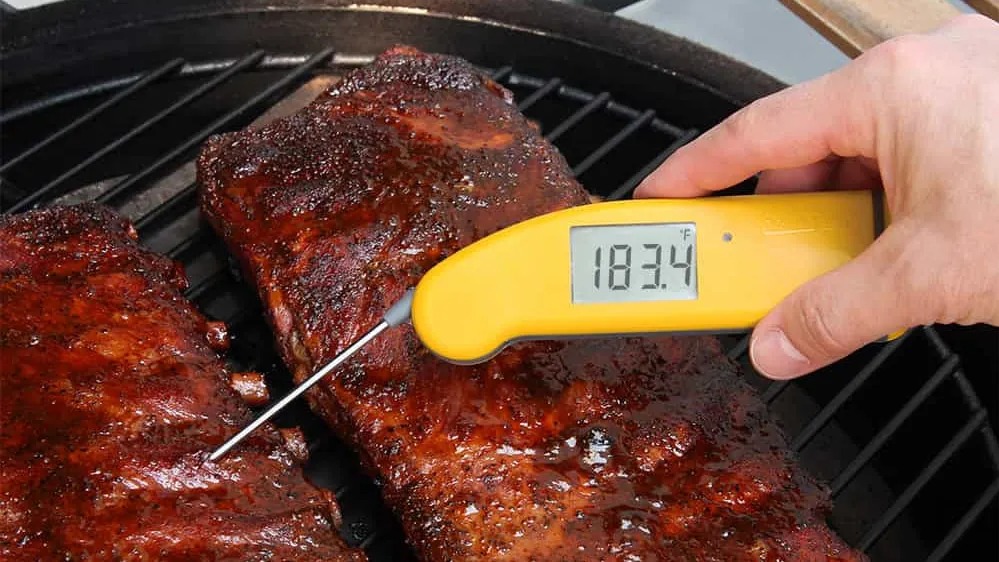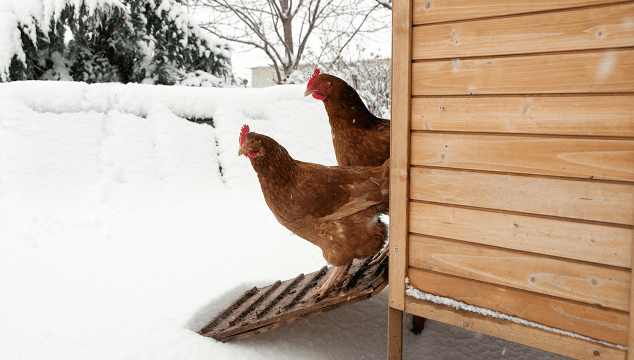Cooking meat accurately can be a challenging task, but it’s terrific when done right. Whether you’re a seasoned chef or a home cook, knowing how to tell if meat is cooked with a thermometer can save you from the dangers of undercooked food and ensure a delightful meal every time. In this comprehensive guide, we are going to explore the technology behind meat thermometers, how to use them, and why they are important.
Using a meat thermometer is a delightful way to take the guesswork out of cooking. It is a tool approved by cooking experts and is a big help in the kitchen. Let’s dive into the tremendous benefits and methods for using a meat thermometer to ensure your meat is cooked perfectly.

What is a Meat Thermometer?
A meat thermometer is a kitchen device used to measure the internal temperature of meat. It helps to determine whether meat is fully cooked, ensuring safety and the desired level of doneness. There are several types of meat thermometers, including digital, dial, and instant-read thermometers.

Why Use a Meat Thermometer?
Using a meat thermometer is crucial for several reasons:
- Safety: Ensures meat is cooked to a safe temperature to prevent foodborne illnesses.
- Accuracy: Provides precise readings, so you know exactly when your meat is done.
- Quality: Achieves the perfect doneness, enhancing the flavor and texture of your meat.

Types of Meat Thermometers
Digital Meat Thermometers
Digital meat thermometers provide quick and accurate readings. They come with a digital display for easy reading and often have additional features like programmable alarms and preset cooking temperatures.
Dial Meat Thermometers
Dial meat thermometers are traditional and straightforward. They have a dial display and are inserted into the meat. While they may take longer to provide readings compared to digital thermometers, they are reliable and durable.
Instant-Read Meat Thermometers
Instant-read thermometers provide immediate temperature readings. They are ideal for quick checks and are very easy to use.
How to Use a Meat Thermometer
Step-by-Step Guide
Follow these steps to ensure your meat is cooked perfectly:
- Preparation: Before cooking, ensure your meat thermometer is clean and calibrated.
- Insertion: Insert the thermometer into the thickest part of the meat, away from bone, fat, or gristle.
- Reading: Wait for the thermometer to display the temperature. For digital thermometers, this usually happens within a few seconds.
- Check: Ensure the meat has reached the recommended internal temperature for its type.
- Rest: Allow the meat to rest before serving to let the juices settle and ensure even cooking.
Recommended Internal Temperatures
Different types of meat require different internal temperatures to be considered safe and properly cooked:
- Poultry (chicken and turkey): 165F (74C)
- Beef, pork, veal, and lamb: 145F (63C) for medium rare; 160F (71C) for medium; 170F (77C) for well done
- Ground meat: 160F (71C)
- Fish: 145F (63C)
Common Mistakes to Avoid
Here are some common mistakes to avoid when using a meat thermometer:
- Incorrect Placement: Ensure the thermometer is placed in the thickest part of the meat, away from bone, fat, or gristle.
- Not Calibrating: Regularly calibrate your thermometer for accurate readings.
- Not Cleaning: Clean your thermometer before and after each use to avoid contamination.
Care and Maintenance of Meat Thermometers
Proper care and maintenance of your meat thermometer will ensure its longevity and accuracy:
- Cleaning: Wash the probe with warm, soapy water after each use.
- Storage: Store your thermometer in a safe place to avoid damage.
- Calibration: Regularly check and calibrate your thermometer to ensure it provides accurate readings.
Advanced Tips for Perfect Meat Cooking
Using a Thermometer with Different Cooking Methods
Whether you’re grilling, roasting, or frying, a meat thermometer can be used with various cooking methods to ensure perfect results.
Understanding the Carryover Cooking Effect
Carryover cooking refers to the phenomenon where meat continues to cook after being removed from heat. Understanding this helps in achieving perfect doneness.
Resting Time
Allowing meat to rest after cooking is crucial for juicy and tender results. This gives time for the juices to redistribute within the meat.
Using Meat Thermometers with Different Types of Meat
Beef
For beef, insert the thermometer into the thickest part, avoiding fat and bone. Follow recommended temperatures for your preferred level of doneness.
Poultry
For poultry, ensure the thermometer is placed in the innermost part of the thigh or breast, avoiding bone.
Pork
Insert the thermometer into the thickest part of the pork, ensuring it reaches the recommended temperature.
Choosing the Right Meat Thermometer
When choosing a meat thermometer, consider the following factors:
- Speed: Digital and instant-read thermometers provide quick results.
- Accuracy: Ensure the thermometer provides precise readings.
- Ease of Use: Choose a thermometer that is easy to read and handle.
Benefits of Using a Meat Thermometer
Using a meat thermometer offers numerous benefits:
- Safety: Ensures meat is cooked to a safe temperature.
- Flavor: Achieves perfect doneness for a flavorful meal.
- Confidence: Provides confidence in your cooking skills.
Conclusion
In conclusion, knowing how to tell if meat is cooked with a thermometer is a valuable skill for any cook. It not only ensures the safety and quality of your meals but also brings a sense of satisfaction and confidence in your cooking. By following the tips and techniques outlined in this guide, you can master the use of a meat thermometer and consistently prepare delicious and safe meals.
For further reading, you can check out this link on how to use a meat thermometer.
FAQ Section
Do I need to calibrate my meat thermometer?
Yes, it is important to regularly calibrate your meat thermometer to ensure accurate readings. Follow the manufacturer’s instructions for calibration.
Can I use a meat thermometer for other foods?
Yes, meat thermometers can be used for other foods like casseroles, baked goods, and even for checking the temperature of liquid dishes like soups and stews.
How can I clean my meat thermometer?
Clean the probe with warm, soapy water after each use. Avoid immersing the entire thermometer in water unless it is waterproof.
As an Amazon Associate, I earn from qualifying purchases.
,
For further reading, you can check out this link on how to use a meat thermometer






